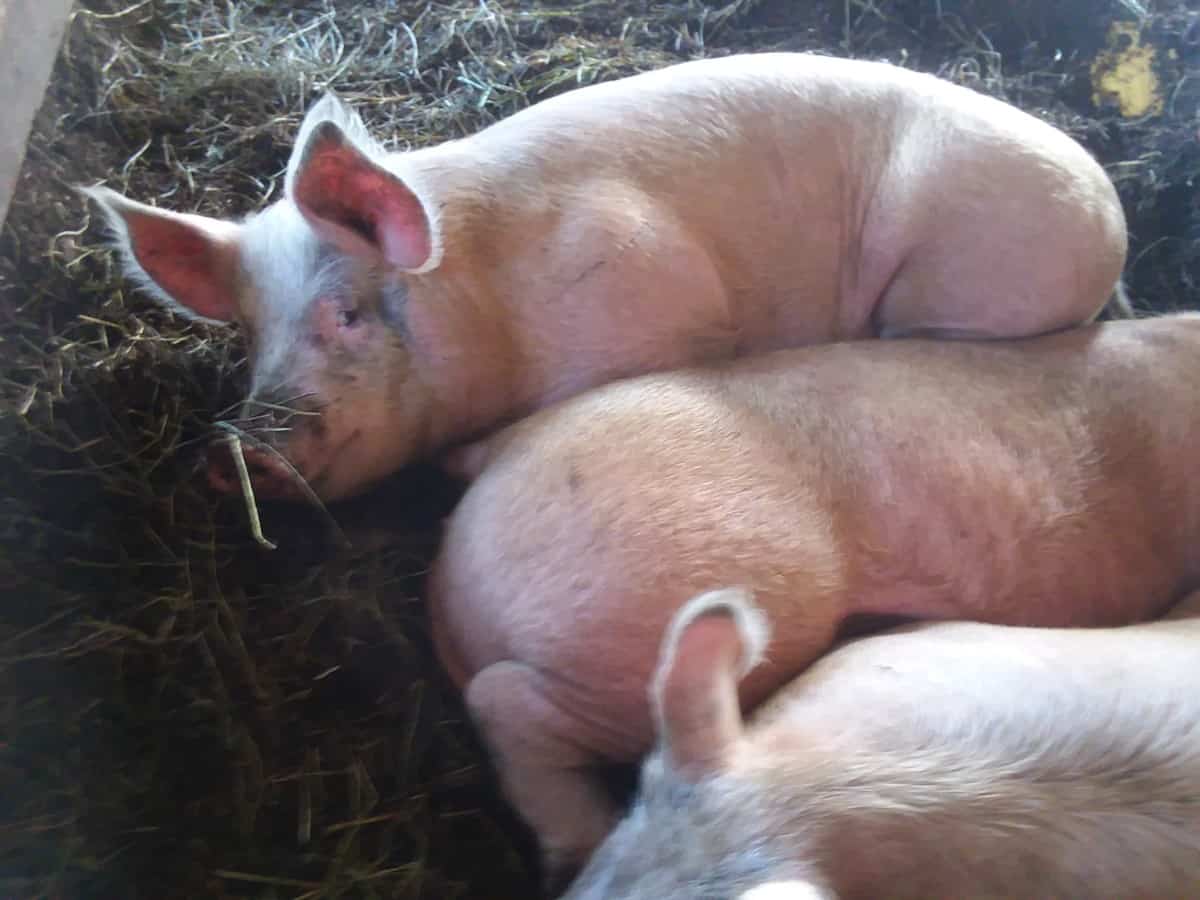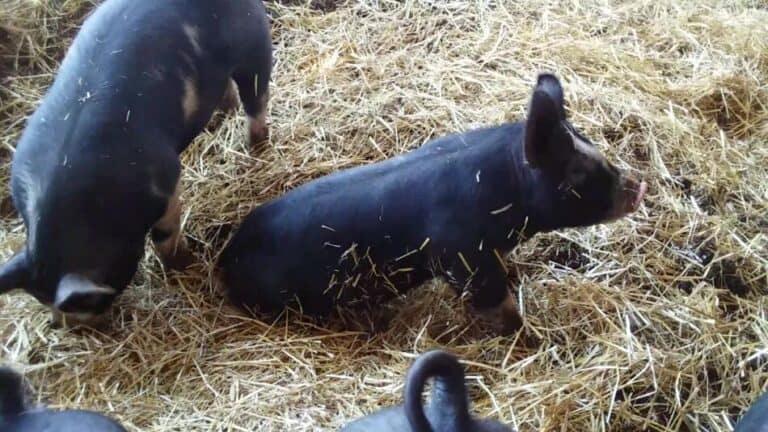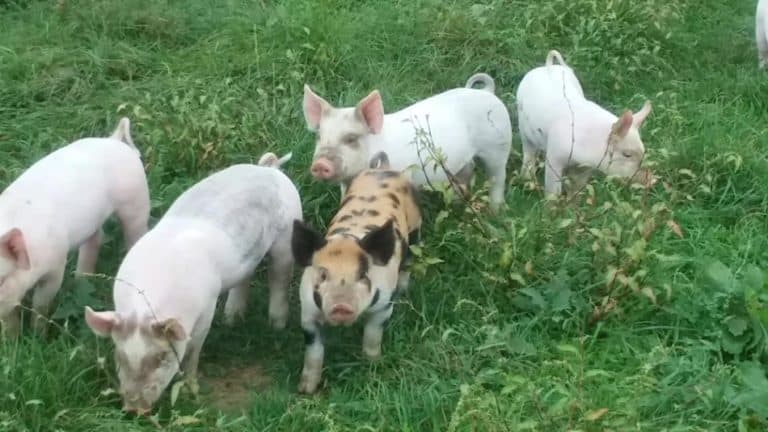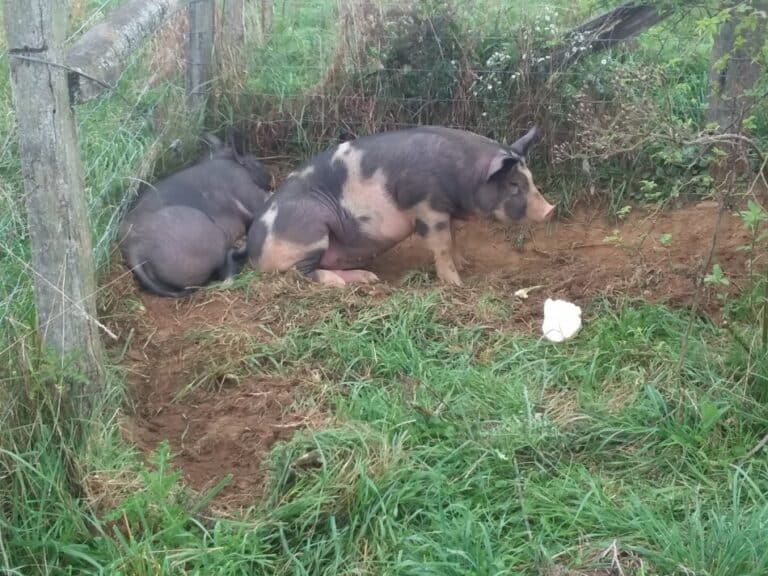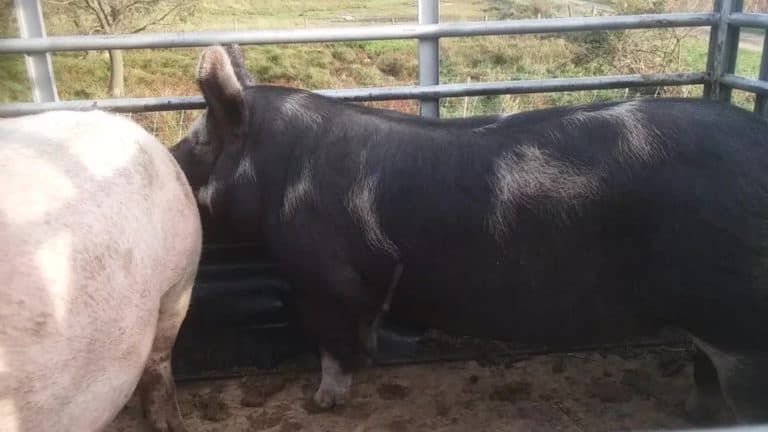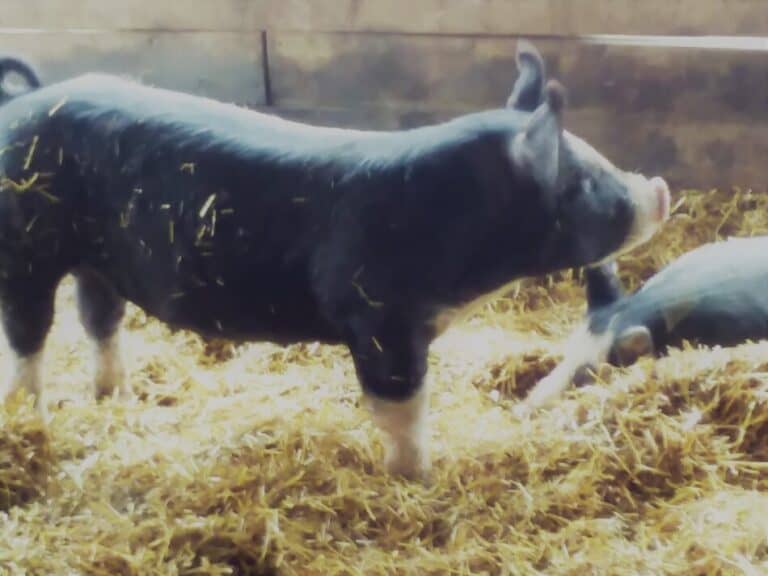Buying Feeder Pigs? Where To Get Pigs You’ll Love
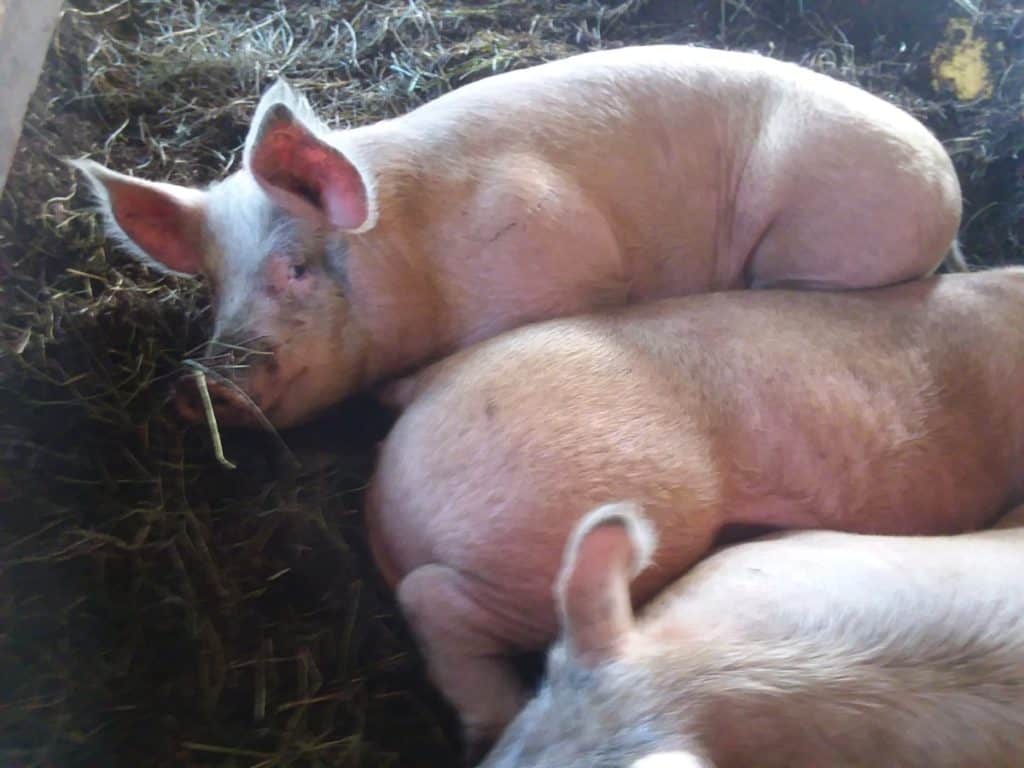
Ready to get your first feeder pigs yet not really sure what to do? You came to the right place! I can help you with some of the basics so you can be more confident your new enterprise will start well.
Feeder pigs can be purchased from a local small farmer, online ads or an auction. Local feeder pigs are your best option, since most auctions sell feeder pigs in larger groups.
Pigs are one of the best choices for raising your own meat. They grow fairly quickly and yield quite a bit of meat for your efforts.
Pigs also are one of the easiest animals to keep because they can be penned up just about anywhere you have some space. Good air flow and some sunshine and they will be happy.
Consider reading my article The Cheapest Meat Animal To Raise where I list out a comparison of common meat animals and see how a feeder pigs compares on total cost and price per pound of meat.
Where to get a feeder pig
Feeder pigs can be purchased at the farm where they were born or at a livestock auction. Both choices have advantages and disadvantages.
Buy feeder pigs from a farm, if you can
Purchasing your first feeder pigs from the farmer will give you a good idea of how he raises his pigs so you will know what your pig is used to.
Have these pigs been outside or kept inside?
Try to get pigs from a farm that is raising their pigs the way you plan to raise yours. This will make the transition to your farm easier on the pig.
If the only pig farms in your area are CAFO’s (confinement farms), not those.
First off, I doubt they have feeder pigs available for sale to the public and secondly, these are not the type of pigs you are looking for.
When I write local pig farm, I mean hands on family farmer, not an industrial pork production facility that happens to be close to your house.
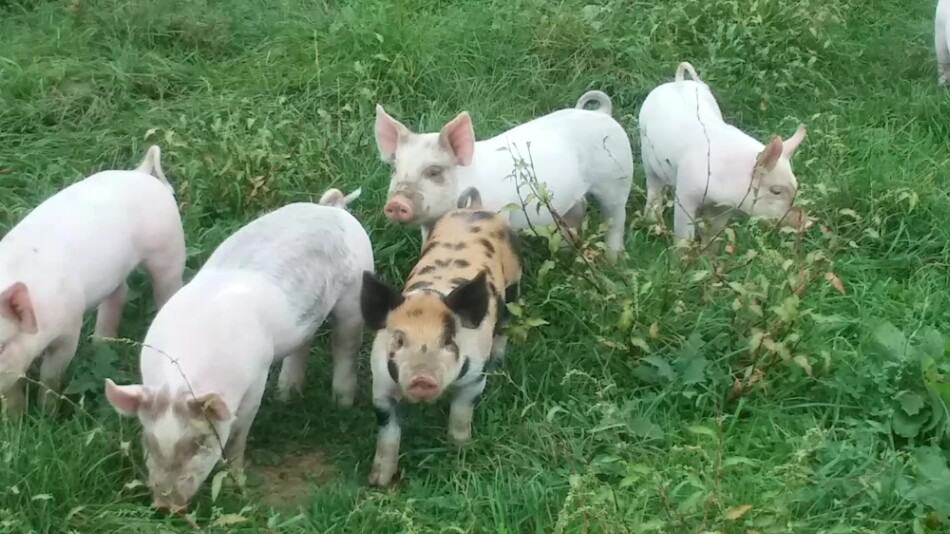
Feeder pigs sell at livestock auctions
We have weekly livestock auctions in our area so this is the easiest choice for us.
If you decide to go to an auction get there early so you have time to look around. Be sure to listen to the announcements at the beginning of the sale.
If you can’t attend the auction and are not overly picky about what you get, the auction has a buyer that can bid for you.
Call the auction and see what they can set up for you.
You’ll need to have a top price that you are willing to pay and a pen ready for the pigs when the hauler brings them, if you are not picking them up yourself.
Buy healthy, spunky feeder pigs
No matter where you decide to purchase your feeder pigs make sure the pigs look healthy. They should be spunky, well grown and not have any obvious health problems.
Which breed of feeder pig is best?
The best breed of feeder pig is a hot topic. Everyone seems to have their favorite choice or is excited to try out for themselves a breed they read about online.
Best Breed Of Pigs For Beginners goes into more detail about why some breeds are easier to raise than others.
Get cross breed feeder pigs
However, the best breed for you to start with is actually a cross breed. Cross bred animals are generally a little bit tougher and faster growing than an purebred animal.
The most common cross bred feeder pig available is called a “blue butt”, which are piglets from a white sow bred to a colored boar.
This type of cross produces white bodied pigs with light bluish grey spots on the back/butt.
Blue butts are a commonly available and reasonably priced feeder pig that would work great as your first pig to raise for meat.
The specific cross doesn’t matter but you’ll be best served by getting pigs that other people are growing in your area.
You can get fancy later once you have some experience.
Feeder pig prices will vary
You can plan on spending $50 per feeder pig at an auction. This is for an three month old or so cross bred pig.
Prices will change, sometimes drastically change, with the seasons and the current demand.
Feeder pig prices are higher in the spring
In our area the prices for feeder pigs are highest in the spring when all the kids are buying pigs to take to the county fair.
Fair pig buyers tend to raise the prices of all feeder pigs at the auction simply because of increased demand equals a higher price.
Check out the local auction reports for the current prices in your area so you can know what to expect to pay.
If you go to a farm for your pig expect to pay a bit more per pig. It is more time consuming to sell pigs to individuals, so the pigs are priced accordingly.
Buy at least two feeder pigs
Another aspect of price to consider is that pigs are herd animals and like to have company of other pigs. If you can get at least two so your pigs will be happy.
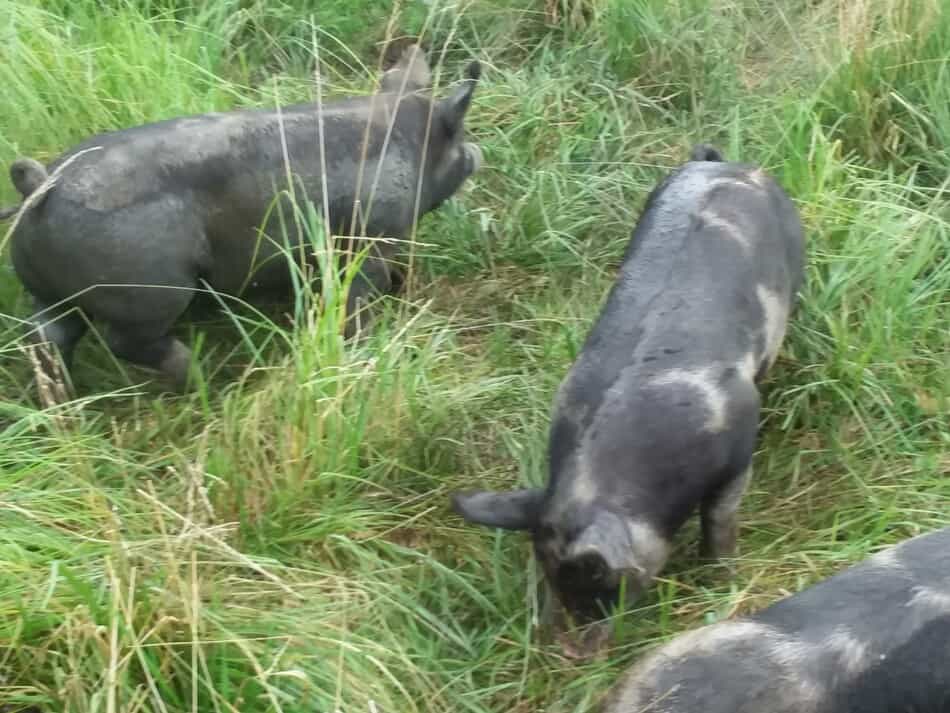
Feeder pigs eat a mixed ground feed
Feeder pigs are fed a ground feed containing corn, soybean meal and a premix supplement that contains all of the minerals and nutrients they need to grow at the optimal rate for their size.
Feed for your feeder pigs will be available at most any farm store. Just read the labels to match the feed with the size of your pigs.
Start your pigs on a 16% feed
Most people will start their pigs out on an 16% protein feed then as the pigs get older you can go to a lower protein (less expensive) feed.
Your pigs should have feed and water at all times. Keep their feeder full. Free choice feeding gets your feeder pigs to market weight the fastest.
Pigs love snacks like hay and garden scraps
Pigs will also eat hay, grass, bugs, and garden scraps. They love to have a few extras to eat now and again.
These extras should not replace the ground feed, but can add interest to the diet and keep your porkers happy.
Feeder pigs take 4 months to finish
If you purchased your pigs at 60 pounds they will finish out for you in about 3.5 months from purchase. The final weight you are shooting for here is 250 pounds.
Most pigs reach the 250 pound processing weight at 5 to 6 months old. If you like your pigs larger (we do) it will take longer to reach processing weight.
We like 300+ pounders, so we plan on the pigs taking longer, more like 4.5-5 months from feeder pig size.
Comfortable pigs will gain weight faster
When your pigs are stressed it will take them longer to reach their finished weight.
Any stressful conditions including weather like a crazy hot spell or a super cold snap will effect the comfort and therefore the growth of your pigs.
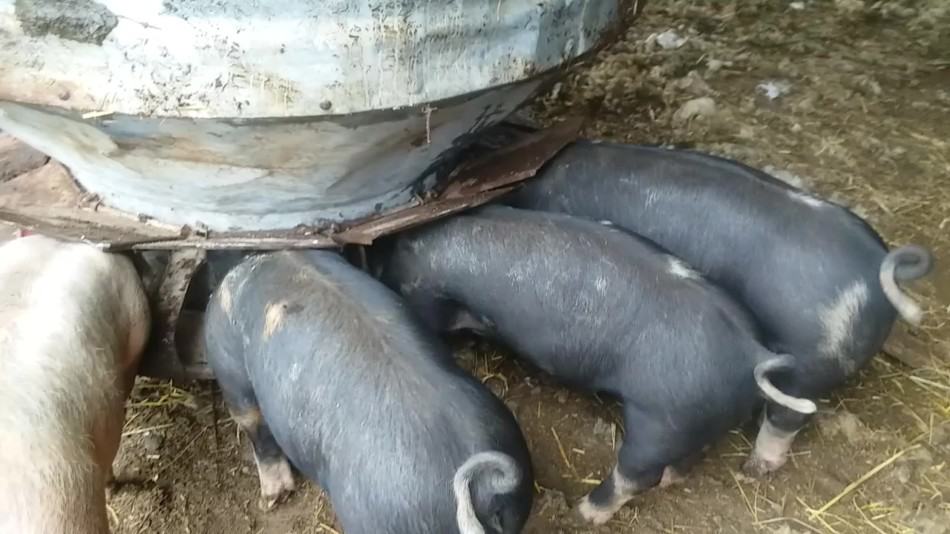
You determine the ideal finishing weight
I just sold a few market hogs that were over 300 pounds, 305 to be exact. What on earth was I thinking letting them get that big? Great question, actually!
Those pigs were purposely feed longer than normal to have more body fat at butchering because, at least around here, people like to have a fat hog to grind in with their deer.
Many Amish families that buy a market hog every fall for home butchering also like to keep their pigs to heavier weights in order to get more lard.
The main point here is you get to choose. Think about what it is that you want most and feed your pigs accordingly.
Most people would be butchering around the 250 pound mark, for a nice balance between fat cover and good size cuts of meat.
You can butcher your pigs at home
Yes, you can butcher your pigs at home! There is plenty of information available online, our first time we used the directions in a book-worked great!
My husband is a deer hunter and we had been processing our own poultry for years, so this was the next big step for us.
Now that we have home butchered both pigs and cattle, we are wondering why it took us this long to try this at home!
Honestly, it’s not that hard. Just have some help the first time and you’ll be good to go!
Here are a few basics to have ready before you start. First off you will need to kill the pig, no surprise there!
We use a .22 because that is convenient for us, use whatever is most comfortable for you. You will also need sharp knives to skin it and a loader tractor with a chain.
The tractor is needed because you will be butchering the pig when it is 250 pounds you will need a way to lift up the carcass.
We use the loader on our tractor by attaching the pig to a chain once it has bled out. If you have deer hunting experience then no problem-you’ve got this.
Important Note: Have all of your supplies laid out and ready before you start dealing with the pig.
The skinning, if you are doing it, needs to be done immediately. The more time you waste, the more the skin cools, the harder it is to get off!
You’ll get 120 pounds of meat from a 250 pound pig
Your pigs will dress out at 72% of slaughter weight. So from a 250 pound pig you can plan on getting a 180 pound carcass.
The difference in weight is from the parts you don’t keep like intestines, skin and head.
Pork does not need to hang, like beef, so it can be put in the freezer right away.
Once you start cutting up the carcass into freezer ready pieces you will lose a bit more weight in trim and oddments that you don’t want to keep, resulting in 120 pounds of meat.
This is an average number, so specialty breeds will vary with a fatter pig will yielding less and a wider, meatier pig will yield more.
Related Questions
Can I keep a feeder pig as a pet?
Yes but be aware that the adult size of a farm pig is 500 plus pounds. If you want a pet pig that will stay smaller get a pot bellied pig or smaller yet a mini pig.
Can I keep a feeder pig in my yard?
Yes as long as it is legal in your area and you are willing to let the pig root up your yard.
Additional resources if you would like more information:
Care and Management of Feeder Pigs is an Oregon State University Extension Service PDF written for the new pig owner, which goes over housing, feeds and health.
